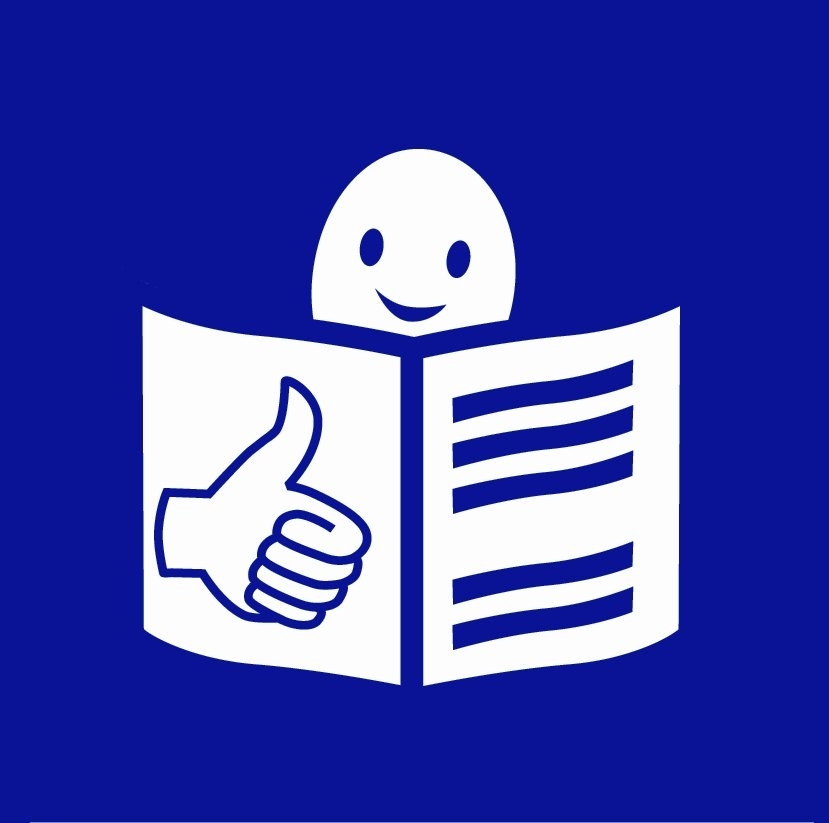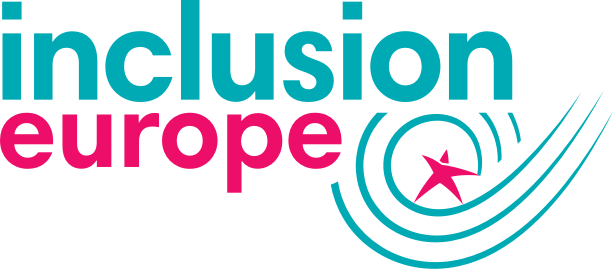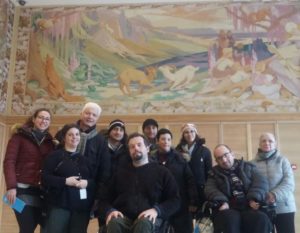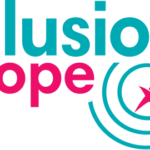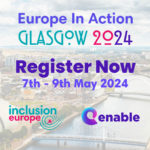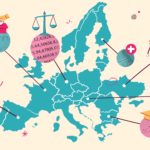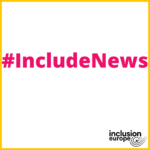Click here for the easy-to-read version
“The training was really useful and we gained a deeper understanding of easy-to-read. We will now implement what we learned at our organisation.” This was the conclusion that Eleonora Di Liberto, vice-president of the Italian disability group “Associazione Uniamoci Onlus“, drew at the end of a one-week course on easy-to-read and accessibility that took place at Inclusion Europe’s offices. The association, based in Palermo in Sicily, works on the topic of social inclusion for people with disabilities.
Training participants came to Brussels as part of a project financed by the Erasmus+ Programme to learn how they can make their information and events more accessible to persons with intellectual disabilities.
Following an introduction to the key concepts of easy-to-read (with one example being Inclusion Europe’s newsletter for self-advocates, Europe for Us) and the European standards developed by Inclusion Europe, Policy Officer Guillaume Jacquinot and Easy-to-read editor Soufiane El Amrani told their interested audience about the SafeSurfing and the Able to Include projects. These are two examples of other ways in which accessibility can be improved for persons with intellectual disabilities, namely through videos and online applications. They also talked about how museums can be made accessible, a topic they had discussed during a trip to Russia in 2017.
“Technology can be a real driver for more accessibility”
Course participants could test their newly acquired knowledge during a visit at the House of European History where they received a guided tour. They also discovered how other European organisations use easy-to-read through presentations delivered by the European Disability Forum‘s director Catherine Naughton and Haydn Hammersley from Autism Europe.
“Technology can be a real driver for more accessibility”, was one point that Catherine Naughton stressed during her presentation: “Developers and IT specialists love challenges, and accessibility for persons with disability is a field offering many of these challenges.”
The last three days of the course were dedicated to topics such as the difference between Plain English and easy-to-read, the advantages and disadvantages of using drawings, photos or pictograms as illustrations and how to make meetings more accessible to persons with intellectual disabilities. Liz Tilly from Building Bridges Training led this part of the training and had participants do a lot of practical exercises to help them get used to writing in easy-to-read.
“Thank you Inclusion Europe for making this training possible!” was the last message the Italian guests had before going back to their country – and starting to put their newly acquired knowledge into practice!
Inclusion Europe thanks Autism Europe and the European Disability Forum, as well as the House of European History, for their kind contributions to the training course. Autism Europe wrote a news article about their training session which can be accessed here. A special thank you to Liz Tilly from Building Bridges Training for sharing her knowledge with the group from Palermo, and of course to our Italian visitors!

Easy-to-read version
Click on a word which is in bold to read what it means.
Easy-to-read: Italian disability group gets training in Brussels
Inclusion Europe gave a 6-day training course.
The training course was about how to make information accessible
to people with intellectual disabilities.
An Italian disability group came to the training.
The group is from Palermo in Italy.
It works for social inclusion of people with disabilities.
Eleonora Di Liberto is the vice president of the group.
She said, “The training was really useful.
Now we understand better what easy-to-read is about.”
The training was supported by the Erasmus+ Programme.
Erasmus+ is a programme of the European Union.
The programme supports education in Europe.
First, Inclusion Europe staff explained what easy-to-read is.
We showed the group our easy-to-read newsletter for self-advocates,
Then we talked about the SafeSurfing and Able to Include projects.
These projects aim to make the internet and mobile phones
more accessible.
We also talked about our trip to Russia in 2017,
where we learnt about making museums accessible.
Catherine Naughton is the director of the
the European Disability Forum.
She talked about how they use easy-to-read at the
Catherine said technology can help to make information more accessible.
Then there was a trip to the
with a guided tour.
Later, Haydn Hammersley came from Autism Europe.
He talked about how they use easy-to-read at Autism Europe.
Then Liz Tilly from Building Bridges ran three days of training.
Building Bridges wants to get
people with an intellectual disability involved in society.
They are based in the United Kingdom.
Liz talked about easy-to-read.
She also explained when it is good to use drawings, symbols,
or pictograms.
Then she led some exercises to create easy-to-read text.
We thank everyone who took part in the training.
